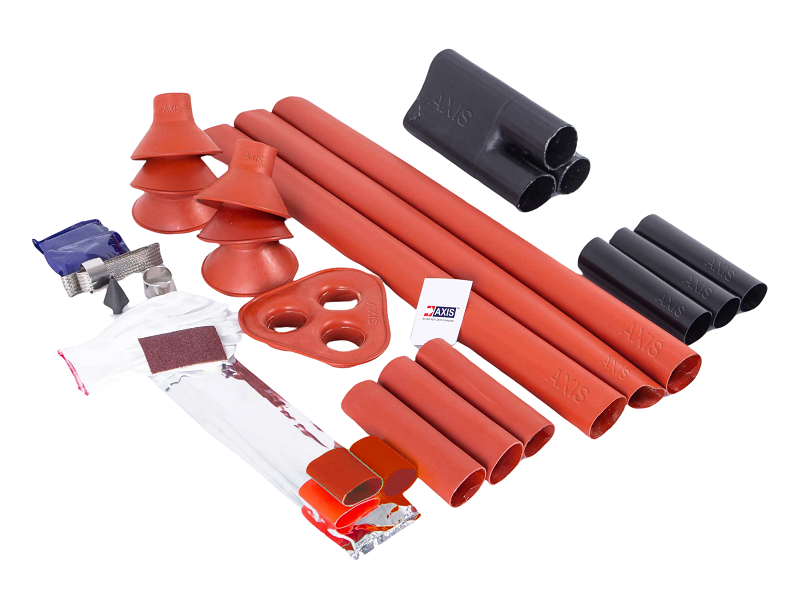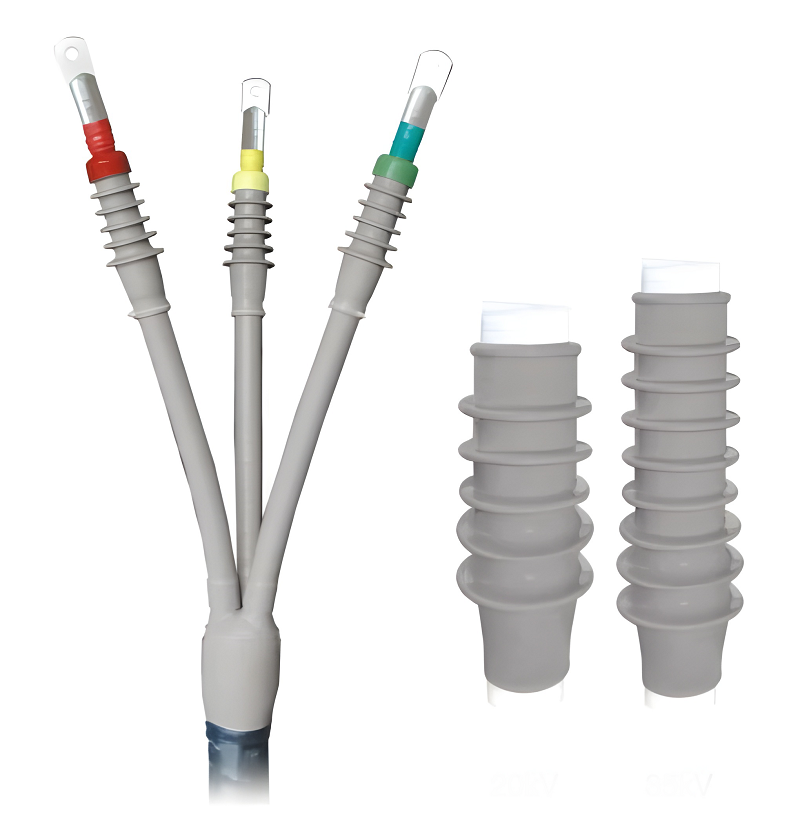

Cables are an essential part of our everyday life, powering everything from light bulbs and appliances to gadgets and cars. To ensure a smooth flow of electricity, cables need to be properly connected. Cable termination is the process of connecting the end of an electrical cable to a device, such as a switch or a circuit breaker. Cable terminations can be done using a variety of techniques, including crimping, soldering, or using special termination blocks.
Let’s understand the two common methods for cable terminations: Heat Shrink and Cold Shrink Cable Terminations.
These methods were developed in the 1960s due to the introduction of rubber and polyethylene insulated cables. Both types use expandable material that is sold in an expanded state. Heat shrink technology uses heat to shrink onto the cable, while cold shrink technology uses the rubber’s natural properties to shrink onto the cable without any external heat. Even though both methods shrink onto the cable, their performance characteristics are quite different.


Cold shrink technology involves using pre-stretched rubber sleeves that are placed around the cable junctions or terminations. These sleeves are designed to tightly fit around the cable once the core that keeps them expanded is removed. As the core is taken out, the rubber sleeve naturally contracts or “shrinks” onto the cable, creating a secure, pressure-sealed fit. This method does not require any heat or flame, making it simpler and safer to install, especially in sensitive or hazardous environments.
Heat shrink technology uses sleeves made from materials that shrink when exposed to heat. During installation, these sleeves are slipped over the cable connections and then heated, typically with a heat gun. The heat causes the sleeve to contract tightly around the cable, forming a protective seal. This method requires precise heat application to ensure even shrinking and a good seal, making it slightly more complex and requiring more equipment and safety precautions than cold shrink methods.
In essence, cold shrink is like a rubber band snapping back to its original size once stretched, while heat shrink is like a plastic wrap that tightens around an object when heated. Both methods are used to protect cable joints and ensure electrical integrity, but each has its own advantages and ideal applications.
Heat shrinkable terminations are tubes that shrink when exposed to heat, usually applied with an electric or gas heat gun. This causes the expanded plastic tubes to shrink to the size of the cable underneath, making installation quick and easy. These kits can be used for XLPE cables in both indoor and outdoor settings, even in extremely hazardous conditions. They provide non-tracking stress control connections for medium to high-voltage cables, and they are resistant to water, UV, erosion, and corrosion.
Cold shrink terminations do not require heat. They are used for medium-high voltage installations where a naked flame or heat source is not safe, such as in areas with flammable gases. During installation, the technician simply removes the supporting cord, which causes the tube to shrink and fit onto the cable. Cold shrink terminations offer excellent insulation and resilienceThey also feature triple air-tight sealing technology to ensure superior air tightness.
Let’s understand what the Heat Shrink Cable Termination Kits contain. The kits manufactured at Axis offer reliability and flexibility to meet the demands of cable network operators, suitable for LV & MV Cables. The components are designed to handle extreme weather, outdoor sunlight, and heavily polluted areas, addressing typical partial and surface corona discharge under challenging service conditions. All components are supplied in an expanded state and shrink effectively upon heat application.
Here’s what you’ll find in the kit:
These components ensure the termination kit can withstand harsh conditions and maintain reliable performance.
Cold shrink and heat shrink techniques each offer their advantages and disadvantages. Cold shrink, being easier and quicker to install, is ideal for installations in tight spaces or challenging conditions. Heat shrink provides a more secure seal and suits applications that require greater mechanical strength. Here are some recommended points by our expert:
The specific requirements of the project ultimately determine the choice between heat shrink and cold shrink. By evaluating factors such as ease of installation, environmental conditions, expertise, and cost, you can make an informed decision that ensures the success of your cable sealing and protection needs.
Thank you for reading the blog, Axis is a leading manufacturer and supplier of Electrical Components to over 80+ Countries. You can also watch our videos by our experts – click here.
Can you make four tap connections using only one connector? The Satellite Connector, also known…
In this blog, you will learn how to install Termination Kit for medium-voltage cables. What…
In 2023 India lost 15% of its generated electricity to technical and commercial losses. Power…
In this blog, you will learn how to install Insulation Piercing Connectors on MV Covered…
In this blog, you will learn how to install a Preformed Alignment Tie for Covered…
Do you know why power lines work even when they are installed at a significant…


